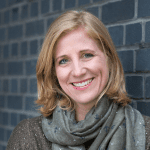The pace of the fellowship pondering is gaining pace as much of our covid response work starts to take a more predictable order. I’ve had wonderful moments of clarity this past week, seeing the opportunity for our mapping work and where a home might sit for this in DOT PROJECT.
With an increased need for charity partnerships & cooperation I’ve started to see the opportunity for system mapping within our core work with charities and community networks. We build strength through technology, we simplify the complex. This is exactly where network mapping has a role to play, providing a snapshot of an ecosystem at a particular point in time and bringing stakeholders together to see gaps and opportunities for systemic change.
“Sensemaking is the activity that enables us to turn the ongoing complexity of the world into a situation that is comprehended explicitly in words and that serves as a springboard into action”
Weick, Sutcliffe, & Obstfeld, 2005, p. 409
I have been down the rabbit hole of network weaving and the incredible services of Network Weaver building connected communities.
A network weaver is someone who is aware of the networks around them and explicitly works to make them healthier. They do this by helping people identify their interests and challenges, connecting people strategically where there’s potential for mutual benefit, and serving as a catalyst for self-organizing groups”.
Beth Kanter
I have very much enjoyed the framing complexity of our recent project alongside Bath+Bristol Creative R&D. Our research looked to create a knowledge map to look at organisations and initiatives that could be considered as representing an ecosystem for inclusion in Bath (& beyond). The scope has interpreted ‘inclusion’ as a broad term, focused on actors which can enable a more inclusive approach within the community.
We have been quite broad looking at where there may be pathways to bringing together more inclusive communities, or in the case of the Bath+Bristol Creative R&D how they may start to engage more inclusively. Use of the word inclusion is by its nature highly complex, and our focus became those actors which can enable a more inclusive approach within the community, and of course the vast majority were charitable non-profit organisations.
This study is on-going, and potentially may be the catalyst to bring together a new network that actively strives to engage with local communities in a more inclusive way.
The key question I’m now asking myself is where the value proposition is for social sector network mapping and open data stewardship. We had initially separated the mapping work from DOT PROJECT (and giving it its own home at DOT INSIGHT) due to the different nature of stakeholders commissioning the work, and quite frankly for confusing our charity audience. I believe the pandemic will fundamentally change this. Our very heart and soul is in collaboration and social impact, and where best to have an impact in guiding, curating and nurturing networks through our mapping practice.

